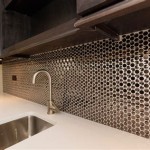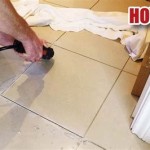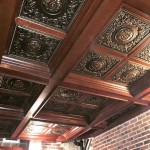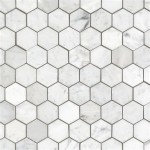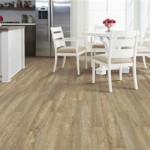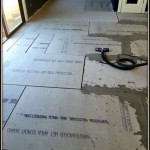Can You Put Tile On Sheetrock In A Shower? A Comprehensive Guide
The question of whether tiling directly onto sheetrock, specifically in a shower environment, is a common one among homeowners and those undertaking bathroom renovations. The short answer is generally no, but a more nuanced explanation is necessary to understand the reasons behind this recommendation and the appropriate alternatives. The success and longevity of a tiled shower installation depend heavily on proper substrate preparation, and understanding the limitations of sheetrock in a moisture-prone environment is crucial.
Sheetrock, also known as drywall or gypsum board, is primarily designed for interior walls and ceilings in areas with controlled humidity. Its composition, primarily gypsum plaster sandwiched between two layers of paper, makes it inherently susceptible to moisture damage. When exposed to prolonged or excessive moisture, sheetrock can degrade, lose its structural integrity, and provide a breeding ground for mold and mildew. These issues can compromise the adhesion of tile and lead to costly repairs.
The Problem with Moisture and Sheetrock
The primary reason sheetrock is unsuitable as a direct tiling substrate in a shower is its vulnerability to moisture. Showers are inherently wet environments, and even with diligent sealing, water can penetrate through grout lines and around fixtures. This moisture seeps into the sheetrock, causing it to soften, swell, and eventually crumble. The paper facing of the sheetrock is particularly susceptible to damage, and once it begins to deteriorate, the bond between the tile and the substrate weakens significantly.
Furthermore, the expansion and contraction of sheetrock due to moisture fluctuations can lead to cracking and delamination of the tile. This process can occur gradually over time, eventually resulting in loose tiles, water leaks, and extensive damage to the wall structure. The cost of repairing these issues can far exceed the initial cost of using a more suitable substrate.
Even "moisture-resistant" sheetrock, often referred to as green board, is not a sufficient substitute for proper waterproofing in a shower. While green board offers improved resistance to moisture compared to standard sheetrock, it is still not waterproof. It is designed to withstand incidental moisture exposure, such as splashes in a bathroom, but it is not intended for continuous or heavy water exposure like that found in a shower enclosure. Using green board without proper waterproofing is still likely to result in moisture damage and tile failure over time.
Acceptable Substrates for Shower Tile
To ensure a long-lasting and waterproof tile installation in a shower, it is essential to use a suitable substrate that can withstand continuous moisture exposure. Several options are available, each offering varying degrees of water resistance and ease of installation. The choice of substrate will depend on factors such as budget, skill level, and the specific requirements of the project.
One of the most common and reliable options is cement board. Cement board is a rigid, cement-based panel that is highly resistant to water damage. It does not rot, warp, or delaminate when exposed to moisture, making it an ideal substrate for shower tile. Cement board comes in various thicknesses and sizes, and it can be easily cut and fastened to wall studs.
Another popular choice is a waterproof membrane system. These systems typically consist of a liquid-applied or sheet-applied membrane that creates a waterproof barrier between the tile and the wall structure. Liquid-applied membranes are applied directly to the substrate, creating a seamless and flexible waterproof layer. Sheet-applied membranes are pre-fabricated sheets of waterproof material that are adhered to the substrate with thin-set mortar. Both types of membranes provide excellent protection against water damage and can be applied over cement board or other suitable substrates.
Foam-based tile backer boards are also gaining popularity. These boards are lightweight, waterproof, and easy to install. They are typically made of closed-cell foam that is coated with a cementitious layer for tile adhesion. Foam boards offer excellent insulation and are resistant to mold and mildew growth. Their lightweight nature makes them easier to handle and install compared to cement board, and they often require fewer fasteners.
In addition to choosing the right substrate, proper waterproofing techniques are essential for a successful shower tile installation. This includes sealing seams and corners with waterproof tape or sealant, ensuring proper drainage, and using a high-quality grout that is resistant to water penetration. Failing to properly waterproof the shower can negate the benefits of using a waterproof substrate and lead to water damage and tile failure.
Key Steps for a Successful Tile Shower Installation
A successful tile shower installation requires careful planning, preparation, and execution. Following these key steps can help ensure a long-lasting and waterproof result:
1. Substrate Preparation: The first step is to properly prepare the substrate. This involves ensuring that the wall studs are plumb and level, and that the substrate is clean, dry, and free of any loose debris. If installing cement board or foam board, it should be fastened securely to the studs according to the manufacturer's instructions. All seams and joints should be taped and sealed with a waterproof sealant.
2. Waterproofing: Once the substrate is prepared, the next step is to apply a waterproof membrane. This can be either a liquid-applied membrane or a sheet-applied membrane. When using a liquid-applied membrane, it should be applied in multiple coats, following the manufacturer's recommendations for thickness and drying time. When using a sheet-applied membrane, it should be adhered to the substrate with thin-set mortar, ensuring that all seams and overlaps are properly sealed. Special attention should be paid to corners, around fixtures, and at the shower floor-to-wall joint.
3. Tile Installation: After the waterproof membrane has cured, the tile can be installed using a high-quality thin-set mortar. The mortar should be applied in a consistent layer, and the tiles should be pressed firmly into the mortar to ensure proper adhesion. Spacers should be used to maintain consistent grout lines. Once the tile is installed, it should be allowed to cure for the recommended time period before grouting.
4. Grouting and Sealing: After the tile has cured, the grout can be applied. The grout should be worked into the grout lines, and any excess grout should be removed with a damp sponge. After the grout has cured, it should be sealed with a grout sealer to prevent water penetration. The sealer should be applied according to the manufacturer's instructions.
5. Fixture Installation: Finally, the shower fixtures can be installed. This includes the showerhead, faucet, and any other accessories. The fixtures should be sealed properly to prevent water leaks. Regular maintenance, including cleaning the grout and re-sealing as needed, will help to prolong the life of the tile installation.
In summary, while it may seem tempting to save time and money by tiling directly onto sheetrock in a shower, it is a practice that is almost certain to result in problems down the line. Investing in proper substrate preparation and waterproofing is essential for a long-lasting and trouble-free tile shower installation. Choosing the right materials and following the recommended installation procedures will ensure that your shower remains waterproof and beautiful for years to come.

Tile Over Drywall Showers A Common But Bad Practice Scott Hall Remodeling
Can You Put A Ceramic Wall Tile On Sheetrock For Basement Shower Quora
What Happens If You Tile Over Drywall In A Shower Quora

6 Bad Ways To Build A Shower What Not Do Diytileguy

Can You Tile Over Drywall Master Building Materials Blog

Can You Tile Over Drywall Master Building Materials Blog

How To Tile Over Sheetrock Doityourself Com

Waterproof Bathtub Shower Walls Over Drywall
How Do I Finish Tiled Shower Tile Meets Wall Diy Home Improvement Forum

Unslightly Transition From Tile To Drywall Need Advice
Related Posts

